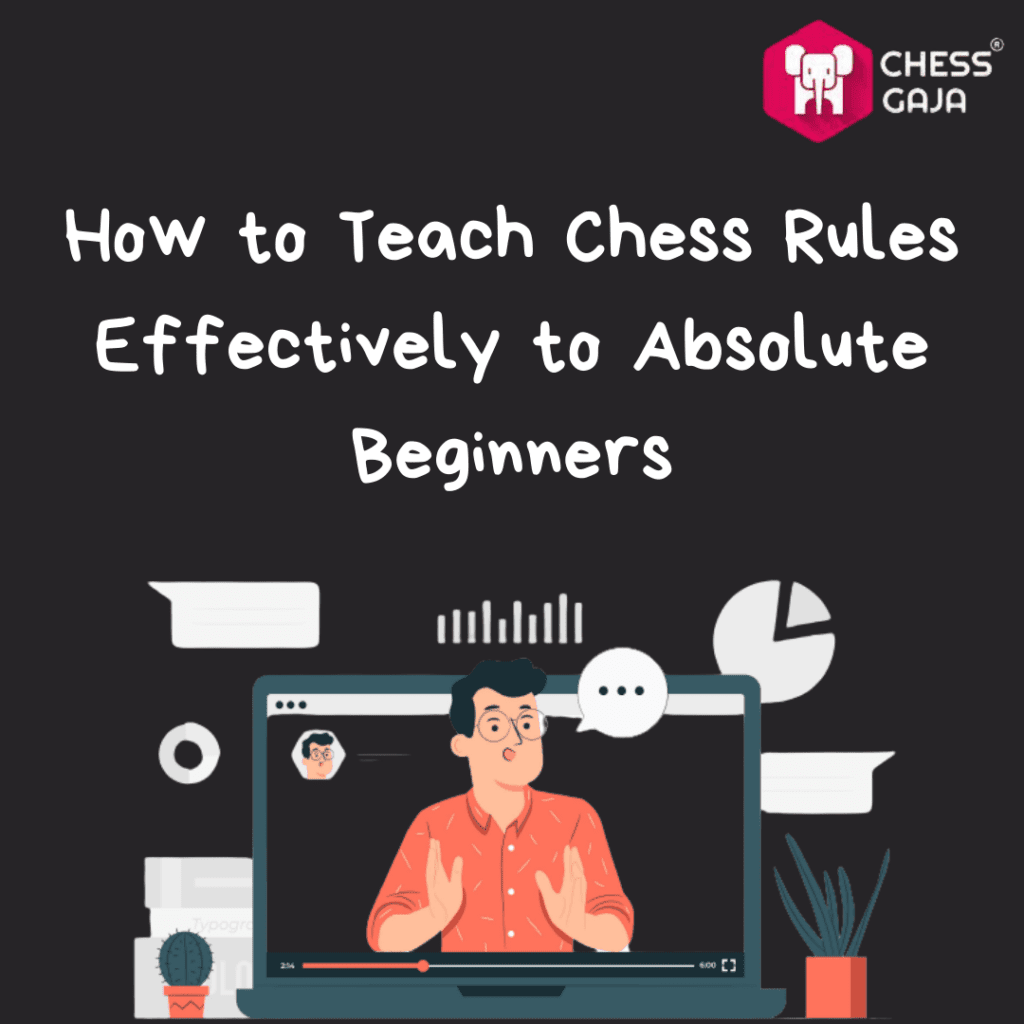Introduction
Welcome to our blog post on how to effectively teach chess rules to absolute beginners. If you are a parent who is looking for online chess classes for your child, you have come to the right place. Chess is not only a game of strategy and intellect, but it also helps in the development of critical thinking, problem-solving skills, and concentration. Teaching your child the chess rules from the beginning is crucial in ensuring a strong foundation for their growth as a chess player. In this article, we will provide you with some tips and techniques to make the learning process fun and engaging for your child.
Understanding the Basics
Before we dive into the strategies for teaching chess rules effectively, it is essential to have a clear understanding of the basics. Chess is a game played on a square board with 64 squares of alternating colors. Each player starts with 16 pieces: one king, one queen, two rooks, two knights, two bishops, and eight pawns. The objective of the game is to checkmate your opponent’s king, which means putting their king under attack in such a way that there is no legal move left for them to escape.
The First Lesson: Piece Movements
When teaching chess to absolute beginners, it is crucial to start with the fundamental piece movements. Let’s go through each piece and explain its unique characteristics:
- The King
The king is the most important piece on the chessboard. It can move one square in any direction – vertically, horizontally, or diagonally. Teach your child how to move the king safely, avoiding any position where it could be captured.
- The Queen
The queen is the most powerful piece in chess. It can move any number of squares in any direction – horizontally, vertically, or diagonally. Show your child how the queen can be a valuable asset in controlling the board and attacking the opponent’s pieces.
- The Rook
The rook is a powerful piece that can move horizontally or vertically any number of squares. Emphasize the importance of controlling the open files and ranks with the rooks to dominate the board.
- The Knight
The knight has a unique movement pattern. It moves in an L-shape – two squares in one direction (horizontally or vertically) and then one square in a perpendicular direction. Teach your child the concept of “knight forks” and how they can be used to attack multiple pieces simultaneously.
- The Bishop
The bishop moves diagonally any number of squares. Since it can only move on squares of the same color it starts on, explain to your child about the importance of having both bishops to control different colors of squares effectively.
- The Pawn
The pawn is the smallest and most numerous piece on the chessboard. It moves forward one square, but captures diagonally. Teach your child about the unique pawn movements, such as en passant captures and pawn promotion when reaching the opposite end of the board.
Engaging Learning Techniques
Now that you have a good understanding of the basic piece movements, it’s time to explore some engaging learning techniques to make the process fun for your child:
- Interactive Online Platforms
There are various online chess platforms that offer interactive lessons specifically designed for beginners. These platforms use gamification techniques to make learning chess rules enjoyable for children. Look for platforms with engaging tutorials, fun puzzles, and interactive games to keep your child motivated.
- Visual Aids and Diagrams
Using visual aids and diagrams can be highly effective in explaining the chess rules to absolute beginners. You can find chess books or printouts with clear diagrams illustrating each piece’s movement. Utilize these resources to visually demonstrate how the pieces move on the chessboard.
- Learning Through Mini-Games
Break down the chess rules into smaller concepts and create mini-games around them. For example, you can set up a game where the objective is to capture the opponent’s pieces using only the knight. This not only reinforces the piece’s movement but also adds an element of fun and challenge to the learning process.
- Practice with Simpler Puzzles
Introduce your child to chess puzzles that are specifically tailored for beginners. These puzzles typically focus on simple checkmate scenarios or fundamental tactics. Solving puzzles not only improves your child’s understanding of the chess rules but also enhances their pattern recognition and strategic thinking.
- Family Chess Time
Make chess a part of your family bonding time. Dedicate regular sessions to play chess with your child. This will provide them with the opportunity to practice the chess rules they have learned and apply them in a friendly and supportive environment. Encourage healthy competition, analyze moves together, and celebrate their progress.
Promoting Continued Learning
As your child progresses and becomes comfortable with the basic chess rules, it is essential to promote their continued learning and growth as a chess player. Here are a few ways to foster their development:
- Progress to Advanced Concepts
Once your child has a good grasp of the fundamental piece movements, gradually introduce them to more advanced chess concepts. Teach them about castling, pawn structures, opening principles, and basic endgame strategies. This will broaden their chess knowledge and help them develop a deeper understanding of the game.
- Online Chess Classes
Consider enrolling your child in online chess classes specifically designed for beginners. These classes are led by experienced chess instructors who can guide your child’s learning journey. Online classes provide a structured curriculum and opportunities for your child to interact with fellow chess enthusiasts, fostering a sense of community.
- Local Chess Clubs
Find local chess clubs or communities where your child can play against other chess players of similar skill levels. Participating in chess tournaments or friendly matches will provide them with real-time chess experience, enabling them to apply their knowledge and improve their gameplay.
- Chess Mentorship
Consider connecting your child with a chess mentor, someone who is an experienced player or chess coach. A mentor can guide your child, offer personalized feedback, and help them overcome any challenges they may face in their chess journey.
Conclusion
Teaching chess rules effectively to absolute beginners requires patience, creativity, and a supportive learning environment. By focusing on the basics, utilizing engaging techniques, and promoting continued learning, you can help your child build a solid foundation in chess. Remember to create a fun and enjoyable learning experience for your child, as enthusiasm and curiosity are key to their growth as a chess player. With the right approach and resources, your child can embark on a rewarding journey into the world of chess.











